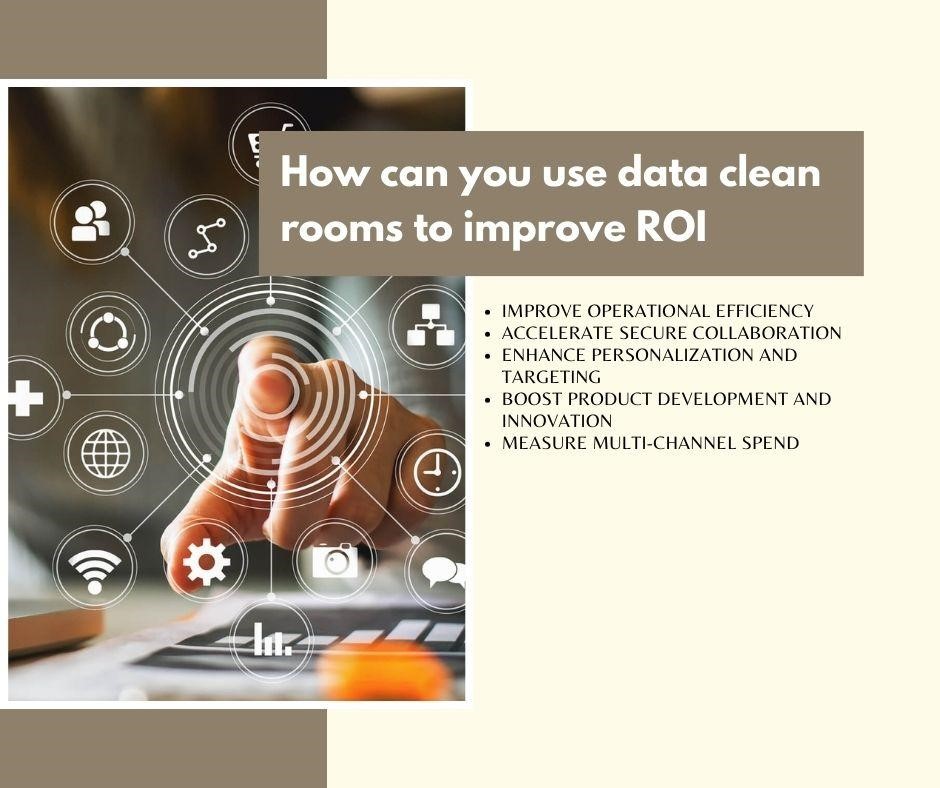Imagine you’re a marketing manager for a popular fitness app. You have a wealth of user data on exercise habits and preferences. However, sharing this data directly with partners, like a sports apparel brand, for targeted advertising campaigns is no longer an option. Why? Personal details such as age, gender, location, and health conditions must remain confidential and compliant with user data privacy regulations. This is where the need for data clean rooms arises!
What is a data clean room?
Data clean rooms act as a secure space where companies can collaborate and unlock the power of their data without compromising sensitive or personal information.
Think of it as a secure, controlled environment like a digital vault. Here, multiple companies, like an athletic apparel brand and your fitness app, can bring their own anonymized data sets. This means that any personally identifiable information (PII), like names, addresses, or phone numbers, is removed from the data. Inside the data clean rooms, these companies can then combine and analyze their anonymized data sets, following strict rules and regulations. This allows them to gain valuable insights without compromising individual user privacy.
As we move further into 2024, leveraging data clean rooms to improve ROI is becoming an essential strategy for enterprises. Here is how you can also be a part of this revolution and use data clean rooms to maximize the value of your data assets.
How can you use data clean rooms to improve ROI
Enterprises use data clean rooms to increase their ROI through various strategic activities and improvements. You can use it in your business to:

1. Improve operational efficiency
Data clean rooms allow different departments to streamline data access and processing through a single integrated platform. This eliminates siloed data workflows and manual cross-checking across teams, improving operational efficiency. For instance, a retail company can use a clean room for their sales, marketing, and finance teams to collaborate seamlessly. They can use shared customer data like purchases, web activity, and support tickets through a centralized source for improving operational efficiency and better decision-making.
2. Accelerate secure collaboration
Data clean rooms provide an opportunity for secure collaboration between two enterprises working together. For instance, pharmaceutical companies often conduct expensive clinical trials to test new drugs and treatments. Similarly, health insurance providers have rich data sets around patient conditions, treatments, and outcomes. By collaborating in protected data clean rooms, these parties can combine their data sets to gain powerful insights into drug efficacy, treatment costs, and patient outcomes – all without exposing confidential data. This way, using data clean rooms for enterprise data collaboration can lower costs and improve R&D capabilities.
3. Enhance personalization and targeting
Enterprises use data clean rooms to refine audience segmentation and personalize their marketing efforts. After properly assessing the shared information, they can ensure that their marketing messages reach the most relevant customers. For instance, a streaming service company collaborates with a music recommendation app. By combining customers’ viewing habits with music preferences, they can identify audience segments likely to enjoy customized content bundles like soundtracks or music-themed shows. This customized approach can ultimately lead to increased subscriptions, user loyalty, and improved ROI.
4. Boost product development and innovation
Data clean rooms facilitate product development and innovation by enabling companies to identify market trends and emerging opportunities with precision and agility. For instance, an EdTech company works with a school. The two enterprises can exchange data on student learning styles, engagement, and performance. By analyzing this combined data, the EdTech company can develop innovative learning tools and content, while the school can make data-driven decisions on developing the curriculum and technology adoption. This approach facilitates student engagement, better academic outcomes, and stronger communication while helping in the overall development of the education sector.
5. Measure multi-channel spend
Enterprises relying on data clean rooms to improve ROI can use it to track campaign performance accurately across different platforms. It acts like a secure bridge that connects data points from various channels like social media, email marketing, and website analytics and helps enterprises measure how much they should spend on which channel. For instance, a travel company can leverage data clean rooms to track the effectiveness of their online ads across different platforms and devices. By analyzing this data, they can determine which platforms generate the most bookings and optimize their media spend accordingly.
On a concluding note
Enterprises use data clean rooms as a powerful solution for maximizing ROI from their data assets. By leveraging clean, aggregated data, companies can refine targeting, personalize messaging, optimize operations, and drive informed decision-making across various business functions.
However, building and managing data clean rooms requires expertise and resources. This is where third-party companies that are skilled in data cleansing services or data management services can play a pivotal role. They are proficient in employing advanced technologies and methodologies to ensure the accuracy, completeness, and consistency of data, thereby facilitating the creation and upkeep of clean rooms. Moreover, outsourcing enables organizations to focus on their core competencies while entrusting data-related tasks to dedicated professionals, leading to improved data quality and integrity within their data clean rooms.
AUTHOR BIO
 A content strategist at SunTec India – a leading IT and business process outsourcing company. With 10+ years of experience, her expertise centers around various data services, especially data support, data entry, and data annotation. Moreover, possessing a comprehensive understanding of photo editing solutions, she specializes in creating informative and compelling content around real estate photo editing, HDR photo editing, and photo retouching. As a digital marketing enthusiast, she keeps herself updated with the latest technological advancements to keep her write-ups relevant, engaging and up-to-date.
A content strategist at SunTec India – a leading IT and business process outsourcing company. With 10+ years of experience, her expertise centers around various data services, especially data support, data entry, and data annotation. Moreover, possessing a comprehensive understanding of photo editing solutions, she specializes in creating informative and compelling content around real estate photo editing, HDR photo editing, and photo retouching. As a digital marketing enthusiast, she keeps herself updated with the latest technological advancements to keep her write-ups relevant, engaging and up-to-date.














